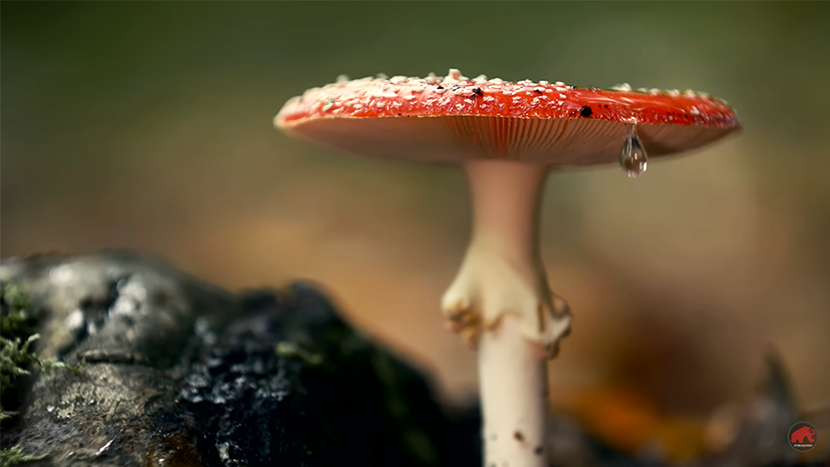The Russian Study on Microdosing Amanita muscaria W/ Baba Masha || S.A.M. Talks
On the forest floor in the Northern Hemisphere an incredible mushroom grows. More famously known for being toxic, this misunderstood fungus is now making waves. It is being taken as an alternative medicine for pain, addictions, migraines, and more. Amanita muscaria, also known as the fly agaric, is a large red mushroom with white spots containing compounds that, when prepared properly, are helping thousands of people. Used for a long time in traditional spiritual rituals, microdosing of this mushroom in Amanita muscaria tea is becoming more popular, with good reason.
In this episode of StoneAgeMan Talks, Rob chats with Baba Masha MD about the results from a incredible self-reported study about the effects of microdosing Amanita muscaria, along with some of her other research:
Baba Masha’s research
Baba Masha MD has to use an alias in order to talk about her work due to personal safety reasons, however, she has quickly become known as an expert in Amanita muscaria. She is most famous for a 12,000 person self-reported study, which she talks about in this book.
She started her own journey with this mushroom to help her deal with back pain. Soon, she began to experiment with it, and collect surveys from other’s experiences. Though she does highlight the downfalls of a survey-based study versus a double blind experiment, this research is an important start to understanding the benefits of microdosing Amanita muscaria. Additionally, she does research on the impacts of Amanita muscaria on guinea pigs, in order to get results in a more controlled environment. She has done experiments across 5 generations and has found positive effects on the health of the treatment group.
History of Amanita muscaria
Amanita muscaria has been used for generations by indigenous people’s in the northern hemisphere, and was first documented by Professor Krashenika in the Saint Petersburg Academy back in 1756. Baba Masha talks about many old books and articles talking about its benefits as well. Unfortunately, like many alternative medicines, knowledge about this fungi has been both lost and purposely suppressed.
Benefits of Microdosing Fly Agaric
Baba Masha’s studies have revealed a range of impressive benefits for users, including:
- Overcoming addiction from a range of substances
- Potential to aid in quality of life for those with Alzheimer’s and autism
- Pain relief for conditions such as wounds, bruises, wasp bites and neuropathic pain (as a tincture)
- Mood enhancement
- Anti-stress
- Reducing postmenopausal hot flashes (as a tincture)
- Overall well-being
- And more…
Baba Masha does of course highlight that individual experiences vary greatly, and that it is really important to start microdosing slowly and monitor how you feel. For example, part of her study, looking at over 20 couples, discovered that individuals react differently to fresh, dried, and fermented Amanita muscaria. Also, different people react to doses differently, and where it is a mood booster for others, it can cause others to feel irritable.
It is also strongly emphasized that taking fly agaric helps to gradually improve well-being. Microdosing Amanita does not have immediate tangible impacts like some other drugs. However, we see this is a benefit more than a downside; as it is helping you to improve your life gradually and more naturally.
Cautions about using Amanita muscaria
Baba Masha does of course give a few cautions for using Amanita muscaria. For example, you shouldn’t use it if you are pregnant, breastfeeding, or if you have a history of psychiatric disease. Once again, she also strongly highlights that it should be taken patiently and with caution and respect.

How to microdose
Baba Masha’s main emphasis is on starting slow and finding what works for you. There is no “one dose” for anyone as each individual is quite different. It is really important to listen to your body, take notes, and adjust accordingly. It is also important to source it responsibly, preferable yourself, from clean areas free from pollutants. Once collected, it should not be washed (as the important components are water soluble). In the interview she also explains her drying process and emphasizes the importance of keeping the dried mushrooms in a sealed moisture-free container.
See more on how to prepare and how to microdose Amanita muscaria here.
Wrapping it up
This conversation explores the many benefits of Amanita muscaria microdosing, as well as the precautions and advice. This misunderstood fungi has great potential, and though more research needs to be done, it is helping many people worldwide. You can read more about the microdosing Amanita muscaria study here.
Disclaimer: The StoneAgeMan blog is for informational purposes only and does not constitute medical advice. We are not responsible for any actions taken based on the information provided. Always consult a healthcare professional before using fungi for medicinal purposes.

